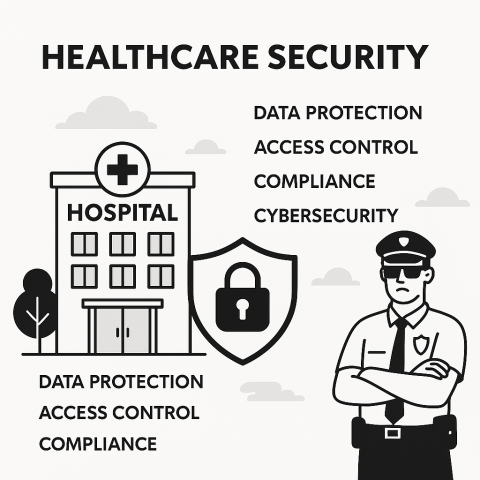
Safeguarding Healthcare Data: A Strategic Guide for Privacy, Compliance, Security and Risk Professionals
Introduction
In the healthcare sector, protecting sensitive patient data is more than a regulatory requirement—it's a moral imperative. With increasing threats, evolving technologies, and complex third-party relationships, professionals responsible for privacy, compliance, security, and risk must adopt a proactive, informed approach. This article distills key insights from the HCISPP framework to help practitioners navigate the healthcare information security landscape with confidence.
1. Understanding the Healthcare Ecosystem
- Entities: Hospitals, clinics, nursing homes, pharmacies, specialty providers and insurers.
- Roles: Providers, payers, and business associates (e.g., consultants, attorneys, clearinghouses).
- Third-Party Relationships: Managing PHI across 1st to 5th parties requires robust agreements and oversight.
Key takeaway: Privacy and security professionals must map data flows and assess third-party risks to ensure compliance and accountability.
2. Governance and Accountability
- Frameworks: Information, security, and privacy governance must be enterprise-wide and risk-based.
- Roles and Responsibilities: From CEOs to ISSOs, clear accountability and segregation of duties are essential.
- Policies and Ethics: Policies define “what,” procedures explain “how,” and standards set boundaries. Ethics codes (e.g., ISC²) reinforce integrity.
Key takeaway: Governance must be measurable, auditable and aligned with business objectives.
3. Technology and Data Management
- Threats: Phishing, ransomware and vulnerable medical devices.
- Data Lifecycle: From creation to destruction, data must be classified, stored securely and retained appropriately.
- Connectivity: Trust models and secure interconnections are vital for third-party data sharing.
Key takeaway: HIT systems must be designed with privacy and security embedded from the ground up.
4. Regulatory Landscape
- Key Regulations: HIPAA, HITECH, GDPR, PCI-DSS, FOIA.
- Breach Protocols: Defined steps for identifying, reporting and responding to data breaches.
- International Considerations: Cross-border data flows require awareness of treaties and jurisdictional nuances.
Key takeaway: Professionals must stay current with evolving laws and ensure frameworks like ISO 27000 and NIST are properly mapped.
5. Privacy and Security Principles
- CIA Triad: Confidentiality, Integrity, Availability.
- Controls: Administrative, physical and technical safeguards.
- Sensitive Data: Categories include mental health, substance abuse, DNA and financial records.
Key takeaway: Data classification and anonymization techniques (e.g., Safe Harbour, expert determination) are critical for compliance.
6. Risk Management and Assessment
- Processes: Identify assets, assess threats/vulnerabilities and calculate impact.
- Controls: Preventive, detective, corrective and recovery measures.
- Frameworks: NIST RMF, COSO, ITIL, ISO 20000.
Key takeaway: Risk assessments must be consistent, measurable and tied to corrective action plans.
7. Third-Party Risk Management
- Due Diligence: Vet vendors, review SLAs and assess compliance.
- Controls: Ensure third-party safeguards match or exceed internal standards.
- Remediation: Track corrective actions and communicate findings transparently.
Key takeaway: Accountability for PHI remains with the primary entity—oversight is essential.
Conclusion
Healthcare data protection is a shared responsibility. Whether you're a privacy officer, compliance lead, security expert, or risk analyst, your role is pivotal in safeguarding patient trust and organisational integrity.
Take the next step: Review your current controls, assess third-party risks and align your practices with recognized frameworks. The health of your organisation—and your patients—depends on it.
Fortify Your Healthcare Cyber Defences – Get a free expert assessment to identify vulnerabilities and implement proven security controls that safeguard your patients. Contact Lockdown market now.
- Log in to post comments

Comments